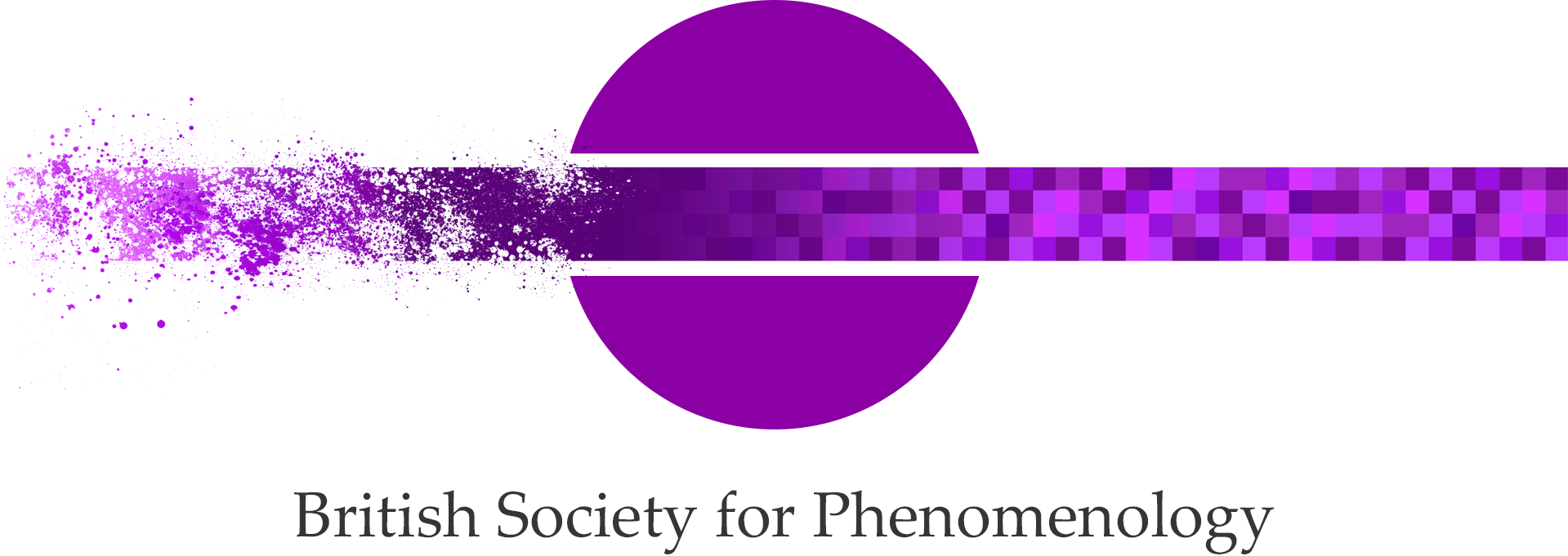Closing Workshop of the Virtual Conference Series – 25 June 2022 – Rosemary Rizo Patrón, Fabio Pellizzer, & Santiago Sourigues.
PHENOMENOLOGICAL TRANSFERS
Representations, Images, and Social Imaginaries
Virtual Conference Series
Closing Workshop
June 25 (Sat) 2022
To participate, please request the Zoom link at the following e-mail address:
[email protected]
Programme
17:30 – 18:30 (CEST)
Keynote Speaker
Rosemary Rizo Patrón (CIphER PUCP)
“Husserl and the Systems View of Life”
18:35 – 19:20 (CEST)
Fabio Pellizzer (Eric Auerbach Institute for Advanced Studies, University of Cologne)
“The Role of Things in Human Becoming (and Human Remaining). Cognitive Archaeology and Phenomenology in Dialogue”
19:25 – 20h10 (CEST)
Santiago Sourigues (DAAD, Universidad de Buenos Aires, University of Cologne)
“Contributions to a phenomenology of transference: Interdisciplinary bi-lateral transfers between phenomenology and psychoanalysis”
Abstracts
Rosemary Rizo Patrón (CIphER PUCP)
“Husserl and the Systems View of Life”
Husserl’s phenomenological philosophy represents the last serious Western effort to provide a “philosophical system” and a unifying account for every human achievement endowed with sense and validity, a system in which the concept of life—from the vantage point of its highest manifestation as self-consciousness—holds the leading role. The plausibility of this claim is established by comparing Husserl’s methodology and core metaphysical insights with elements of a newly emerging scientific paradigm that is currently manifest in the most advanced scientific investigations —the systems view of life— as overcoming the dualistic and mechanistic paradigm that has prevailed in Western sciences and philosophy since Descartes. I suggest that Husserl’s philosophical phenomenology is not only more compatible but also more consistent with this new “unifying vision”—the system’s view of life—than other current philosophical proposals.
Fabio Pellizzer (Eric Auerbach Institute for Advanced Studies, University of Cologne)
“The Role of Things in Human Becoming (and Human Remaining). Cognitive Archaeology and Phenomenology in Dialogue”
In this paper I intend to establish a dialogue between phenomenology and Material Engagement Theory (MET). MET is a leading approach in cognitive archaeology, elaborated by Colin Renfrew and Lambros Malafouris. This approach advocates the importance of materials, techniques and artifacts in shaping human cognition; it adopts externalism and 4E cognition, and is inspired by semiotics and pragmatism. MET is particularly relevant in relation to contemporary developments of phenomenology: in 2018, the journal Phenomenology and the Cognitive Sciences devoted to MET a thematic issue; more recently, Malafouris and Idhe discussed the similarities between MET and post-phenomenology. However, potential affinities (and productive contrasts) with ‘classic phenomenology’ are still unexplored. This paper will make a step in this direction by bringing into contact phenomenology with two pivotal concepts of MET, namely, “constitutive symbol” (Renfrew) and “enactive sign” (Malafouris). This ‘encounter’ will help understand the role that artifacts play not only in “human becoming” (Malafouris), but also in what l call “human remaining”. As pointed out by Malafouris, understanding human becoming (and therefore human remaining) requires a process-ontology, rather than a substance-ontology. In this paper, I suggest that phenomenology can provide a theoretical framework for understanding artifacts as processes that enact behavioral and symbolic complexity. I consider some examples discussed in archaeology – e.g., standard weights, pottery making – in order to identify the main challenges posed by the idea that symbols, concepts and imaginaries emerge in human engagement with material world. How do things and techniques become signs or symbols? How can we understand this becoming as a process? How is the ‘salience’ of signs and symbols related to affordances and tool-use (e.g., continuity, discontinuity)? I propose to address these questions building upon phenomenological accounts of constitution (Husserl, Heidegger) and expression (Merleau-Ponty). I consider Yekuana and Wayana baskets, as discussed by Severi (2018); I locate in the practice of basket-making an instantiation of how artifacts disclose imaginary and symbolic possibilities through an interplay of usefulness and expressivity, according to different degrees of continuity and discontinuity with affordances and tool-use.
Santiago Sourigues (DAAD, Universidad de Buenos Aires, University of Cologne)
“Contributions to a phenomenology of transference: Interdisciplinary bi-lateral transfers between phenomenology and psychoanalysis”
The following presentation will aim at setting the guidelines for an interdisciplinary theory of transference through a reciprocal contribution between phenomenology and psychoanalysis, fields which share historical, methodological, and content-related common interests which make them compatible for an interdisciplinary work. To such aim, our proposal consists of making a phenomenological analysis of the psychoanalytic phenomenon of transference conceptualised by Freud. This phenomenon is defined by him through four distinguishing features: 1) acting-repetition (remembering as repetition “in-act”) which substitutes remembering in form of memories; 2) repetition of the past in the present with a change in its temporal sign, then it is repeated as mere present, losing its past character; 3) repetition of the symptoms and its founding pathogenic drives in the relation to the analyst; 4) repetition of a certain characteristic manner in the way the love life is exercised, namely according to partly conscious and partly unconscious clichés which are repeated and reprinted throughout life, forming psychic series in which new objects are inserted, as it is the case of the analyst himself. As a result of these, the relation with the analyst and the sense of the analytic experience is lived and formatted according to the transferred past i.e., by the living, operating past, but at the same time, by means of it, a privileged access to the unconscious is thus provided, which serves as a condition for the intervention of the analytic treatment.
In this context, we propose to analyse this phenomenon making use of the phenomenological method, placing particular emphasis on the genetic approach in phenomenology and certain conceptual-methodological resources provided by Husserl’s and Merleau-Ponty’s phenomenology. Within the husserlian phenomenology we will specially refer to the notion of transference as analogising transference, legality which operates at the parification, arch-form of the passive synthesis of association in the context of the phenomenology of empathy and the constitution of the experience of the other, by means of which the noematic sense of the experience of the other is analogously apperceived and anticipated as a result of the transference of the noematic sense of my living-body as Leib. Within Merleau-Ponty’s phenomenology, we will turn to his reception and reinterpretation of transference as operating legality of transposition of the corporeal scheme, which passively articulates the different fields of experience and thus enables that that which takes place in a certain field of experience is transposed to another, as it is the case of the psychic symptom, which is converted to the body, or the symptoms which are transferred and repeated in relation to the analyst.
As a preliminary conclusion, we try to set some guidelines for an interdisciplinary theory of transference, which serves to the purpose of encompassing these phenomena and at the same time makes use of the common threads between them to outline a theory of subjectivity which delivers us a deeper understanding of its passive regulating structures.

